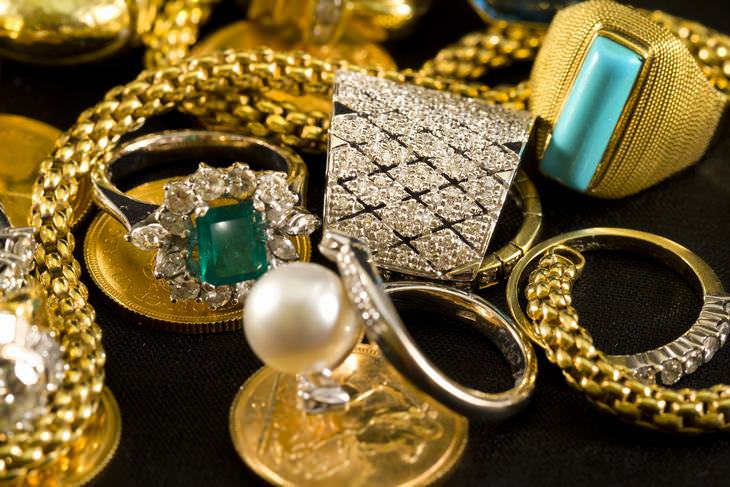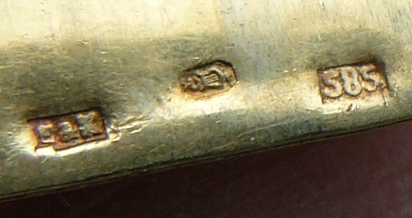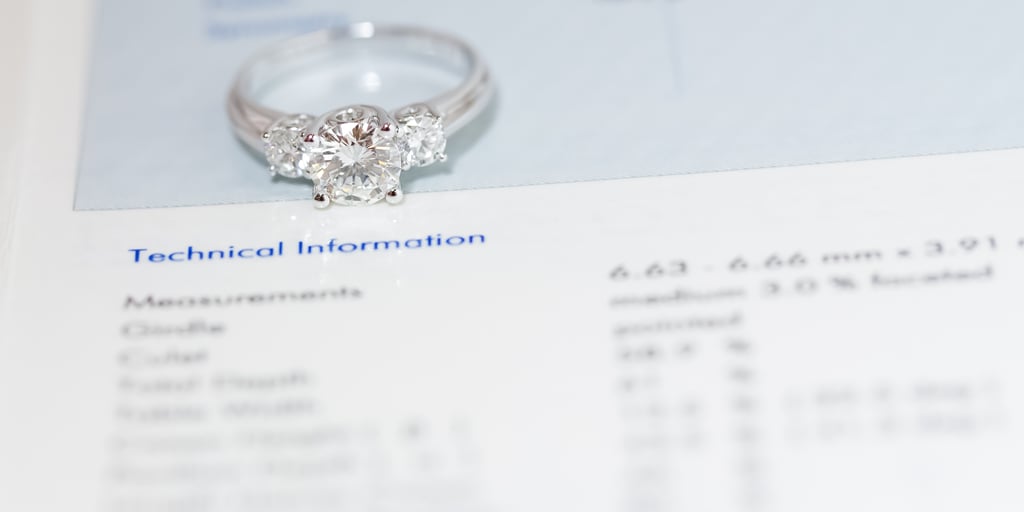




Branded items often come with their own hallmark, particularly if they’re a high-end brand. Check for this to ensure that your item comes from the designer it claims. Many fake jewellery sellers have caught on, and often will create jewellery with fake hallmarks. While these may look legitimate from a distance, you can often find small giveaways at a second glance. Look closely at fonts, layouts and spellings to ensure the hallmark on your jewellery perfectly matches the designer.
6. Check the quality

There are usually instant giveaways in terms of quality if an item isn’t genuine. Take a close look at your jewellery and ensure that the construction is on point. In a bracelet or necklace, check the links — they should never look pinched together, but should instead have a smooth, solid look.
If you have a jewellery item containing a stone, for example, a ring, check the setting and mounting of the stone. Costume jewellery can sometimes be passed off as genuine, but a closer look will reveal stones are often glued in place rather than properly mounted. These are all seemingly obvious points, but ones that can easily be missed at first glance or in a picture online.
7. Check the stones

While bad quality jewellery may often be easy to spot, sometimes a gemstone that is too perfect can be a giveaway of a fake. Real gemstones are not perfect, and you can often see naturally formed flecks within the stone. Similarly, with diamonds, these are naturally formed, and you can usually spot the natural imperfections within when looking through a magnifying glass.
Replicas of precious gemstones and diamonds are often created through a mixture of glass and plastic and will have an overly smooth appearance that will give them away.
8. Did you receive certification and documentation?

If you’re purchasing a piece containing a diamond, this should arrive with a certificate to prove its authenticity. This can be from the GIA, the IGI or the EGL.
If your jewellery doesn’t arrive with certification, ask for it! Also be sure to check other documentation that arrives with your jewellery, for example, the manufacturer details, cleaning instructions or care tips. Look out for the quality of the printing, as well as the grammar and spelling used — poor quality documents are a giveaway of fake goods.
9. Test the metal

If following these tips, you’re still not sure on the authenticity of your piece, there are a number of final physical tests you can do.
The Magnet Test – Gold and silver are not magnetic. Hold up a strong magnet to your piece of jewellery — if it sticks, this is an immediate indication of a fake material being used.
The Fog Test – The fog test is best used for determining whether a diamond is real or fake. Simply breath hot air onto the stone — a real diamond does not retain heat, so will not fog up, while a fake diamond will.
The Skin Test – Possibly the best known physical test to spot fake jewellery is the skin test. Does wearing your jewellery turn your skin green, or cause any kind of irritation? Genuine gold and silver will not react with the skin, so any problems are an instant giveaway of a fake piece.
There are various other tests you can do to determine fake metals, including the scratching or biting test — but we’d advise leaving that to the professionals! Which leads us neatly to our final point…
10. Get a second opinion

If you’re not confident about the quality or authenticity of your jewellery, always seek a second opinion! Visit a jeweller or pawn shop and find a professional appraiser who can take a look at your jewellery and allay any doubts you may have.
Of course, buying jewellery from a reputable jeweller is one instant way to ensure quality, high-end pieces. Across the Joshua James collection, you can discover a stunning variety of women’s necklaces, bracelets, watches and charms from top brands such as Olivia Burton, ChloBo, Nomination and Trollbeads. Explore the full collection today to find the perfect new piece for you.